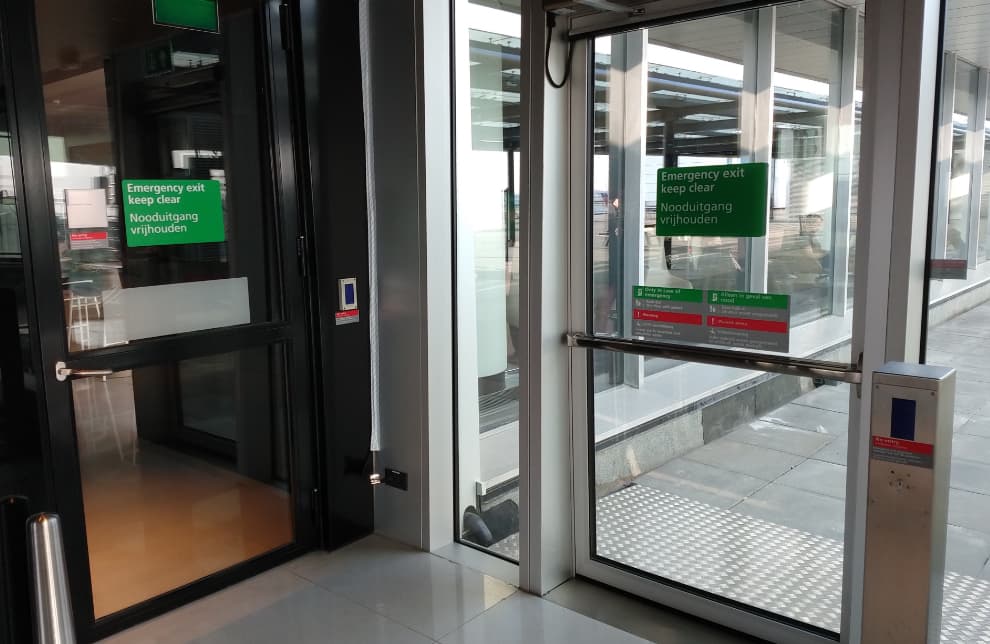These days so many handy things seem perfectly ordinary, like a door that opens when you hold a security pass to it. But in practice that can be a real challenge. Right now, in Departure Hall 1, we are installing and replacing no fewer than 250 access control doors. That’s a great excuse to share a bit of trivia.

Published on: 23 April 2019
Did you know?
- Departure Hall 1 will have 250 entryways for Schiphol staff members and other people who work at the airport, such as the fire service, KLM, HMSHost, handling agents and the Royal Netherlands Marechaussee.
- For all those doors to work properly, we have to install more than 30 different configurations. Some doors open in the traditional manner, some are revolving doors and others slide across the wall.
- The doors need a total of 100 control cabinets, each containing a mini computer that checks the authorisations of every Schiphol Pass. For example, the system has to be able to recognise which pass a person needs in order to go beyond Border Control.
- Connecting the 100 control cabinets to a server park in a computer centre takes 50 or 60 network connections for Terminal 1.
- Each component of an access control door – such as a lock, a contact point, a push bar or a pass reader – has its own cable. That’s an average of nine cables per door, which adds up to more than 2,000 in total.
- The access control doors keep the borders secure and make sure that only people with the correct authorisations can get into protected areas. All in all, we currently have 80,000 active Schiphol Passes.
- Schiphol Passes for secure areas are equipped with the owner’s iris scan. Departure Hall 1 will soon have six biometric gates and two biometric pillars. This system creates a double security check, with the BIODs checking whether the pass in question is actually being used by the right person.
- We create a door matrix for the doors, incorporating a variety of requirements requested by all the stakeholders concerned. One might need to drop into the lock, the fire service must to be able to get through certain doors as quickly as possible, maintenance has to be as straightforward as possible, and an alarm must go off if a door stays open for too long or if an escape route is opened.
- In addition to the ‘ordinary’ doors, we also need temporary doors in areas such as the hoardings in the various different construction and boundary areas.
- About 16 hours of IT work goes into each door. That includes consultation with the relevant people, setting up the configurations, linking the door to other systems, updating floor plans with the new doors, testing everything, and so on.
- Several different kinds of software link the doors to other systems, such as the connection with the Safety and Security Centre, Schiphol’s alarm centre. For example, if a door at a border crossing breaks down or if the push bar is pressed, we have to be sure that all the alarm bells will start ringing right away.
A secure departure hall
Controls in a departure hall – not least border controls – are crucial to keeping an airport secure, so a strict door policy is indispensable. The 250 doors in Departure Hall 1 take care of that, which makes all the roughly 4,000 hours of work that go into installing them worthwhile.